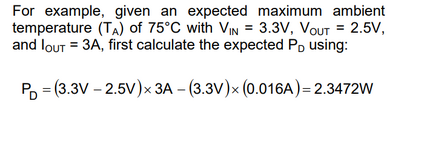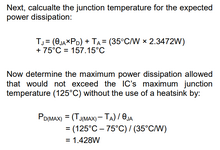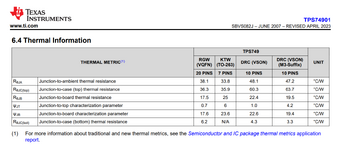engr_joni_ee
Advanced Member level 3
I am trying to understand the thermal analysis especially how to calculate junction temperature. I will ask my question but I am wondering how do we write mathematical symbols or equations here in the editor ?
I was reading the datasheet of MIC29302A. In the data sheet on page 10 (see attachment) they use maximum ambient temperature 75C and not 25C. I don't get it. I guess the ambient temperature is 25C which is like room temperature but they use 75C.
On page 11 (see attachment), the have found junction temperature 157 C which is outside the operating range. So, in order to calculate junction temperature (T_J), we need out maximum power dissipation (P_D), ambient temperature (T_A) and also package thermal resistance (theta_J-A), right ? And the junction temperature (T_J) should be within the operating thermal range, right ?
I was reading the datasheet of MIC29302A. In the data sheet on page 10 (see attachment) they use maximum ambient temperature 75C and not 25C. I don't get it. I guess the ambient temperature is 25C which is like room temperature but they use 75C.
On page 11 (see attachment), the have found junction temperature 157 C which is outside the operating range. So, in order to calculate junction temperature (T_J), we need out maximum power dissipation (P_D), ambient temperature (T_A) and also package thermal resistance (theta_J-A), right ? And the junction temperature (T_J) should be within the operating thermal range, right ?
Attachments
Last edited:


